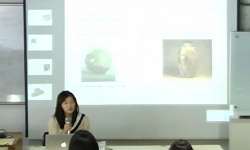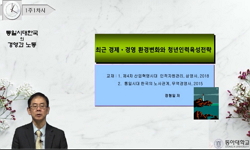This research objective is to find a direction of the unified Korea’s alliance policy with the U.S. in balance of interest by prospecting status and options and by analyzing the benefits and losses on the Korean unification and its alliance policy t...
http://chineseinput.net/에서 pinyin(병음)방식으로 중국어를 변환할 수 있습니다.
변환된 중국어를 복사하여 사용하시면 됩니다.
- 中文 을 입력하시려면 zhongwen을 입력하시고 space를누르시면됩니다.
- 北京 을 입력하시려면 beijing을 입력하시고 space를 누르시면 됩니다.
https://www.riss.kr/link?id=T14435513
- 저자
-
발행사항
Seoul : Korea University, 2017
-
학위논문사항
Thesis(M.A.) -- Graduate School of International Studies, Korea University , 2017
-
발행연도
2017
-
작성언어
영어
- 주제어
-
KDC
349 판사항(6)
-
DDC
327 판사항(23)
-
발행국(도시)
서울
-
형태사항
72 leaves ; 26 cm
-
일반주기명
Adviser: Sung-han Kim
Bibliography: leaves 64-72 - DOI식별코드
- 소장기관
-
0
상세조회 -
0
다운로드
부가정보
다국어 초록 (Multilingual Abstract)
This research objective is to find a direction of the unified Korea’s alliance policy with the U.S. in balance of interest by prospecting status and options and by analyzing the benefits and losses on the Korean unification and its alliance policy that could be brought to surrounding countries. In the 2009 Joint Vision for the ROK-US alliance and at the commemoration of the 60th anniversary of the alliance in 2013, the both countries agreed that the alliance should lay the groundwork for the reunification of the Korean Peninsula. It is very meaningful for the two countries to prepare the future of the strategic alliance between them in terms of considering the environment of the unified Korea in Northeast Asia and their interests. However, there are concerns about the continued alliance with the U.S. after the Korean unification despite the removal of a threat-North Korea, which has been the reason of the ROK-US alliance. There has been argument about alliance formations based on the balance of power, balance of threat so far. However, after the Korean unification, the strategic relations and choices between countries will be come from more consideration of balance of interest than recognition of threat. Regarding this, chapter two will see theory and literature review and prospecting internal status of the unified Korea and its impact on the international relations and analyzing benefits and losses of the great powers on the unified Korea will be followed in chapter three. Reflecting these, the chapter four will see three impossible options (neutralization, alliance with China instead of the U.S., and the unified Korea’s nuclear armament without alliance) and one possible option (continued Korea-US alliance based on interests) as the unified Korea’s alliance policy with considerations of balance of interest and various circumstances. Lastly, based on this analysis and prospect, this paper will see restructuring forces of the future Korea-US alliance as a proper policy.
목차 (Table of Contents)
- I.Introduction...................................................................................... 1
- II. Theory and Literature Review ..................................................... 5
- 2.1 Alliance Theories ......................................................................................... 5
- Concept of Alliance and Its Meaning ......................................................... 5
- I.Introduction...................................................................................... 1
- II. Theory and Literature Review ..................................................... 5
- 2.1 Alliance Theories ......................................................................................... 5
- Concept of Alliance and Its Meaning ......................................................... 5
- Balance of Power Theory ............................................................................ 7
- Balance of Threat Theory .......................................................................... 10
- Balance of Interest Theory ......................................................................... 12
- 2.2 Literature Review .................................................................................... ..14
- Factors determining the ROK-US Alliance and Its Change ...................... 16
- Shift from Threat to Expected Benefit and Cost ........................................ 19
- III. The Unified Korea and Northeast Asia .................................... 22
- 3.1 The Unified Korea and Its Influence in Northeast Asia ............................ 22
- a. The Unified Korea’s National Interests and National Power ................ 23
- b. The Unified Korea’s Impacts on Benefits in Northeast Asia ................ 25
- 3.2 Benefits and Losses of Great Powers on the Korean Unification .............. 30
- a. The United States ................................................................................... 30
- b. China ...................................................................................................... 32
- c. Japan ....................................................................................................... 36
- d. Russia ..................................................................................................... 38
- IV. Strategic Options and the Unified Korea's Alliance Policy ... 41
- 4.1 Various Options for the Unified Korea ...................................................... 42
- a. Neutralization ......................................................................................... 42
- b. Korea-China Alliance ............................................................................ 44
- c. Neuclear Armament without Alliance ................................................... 46
- d. Continued the Korea-US Alliance ......................................................... 48
- 4.2 Directions of the Korea-US Alliance’s Force Structure ..................................... 56
- a. Symbolic Alliance without US Forces ................................................................... 56
- b. Alliance with Naval and Air Presence ................................................................... 57
- c. Alliance with symbolic Ground Forces and Naval / Air Power ................. 58
- V. Conclusion ..................................................................................... 61
- Bibliography












